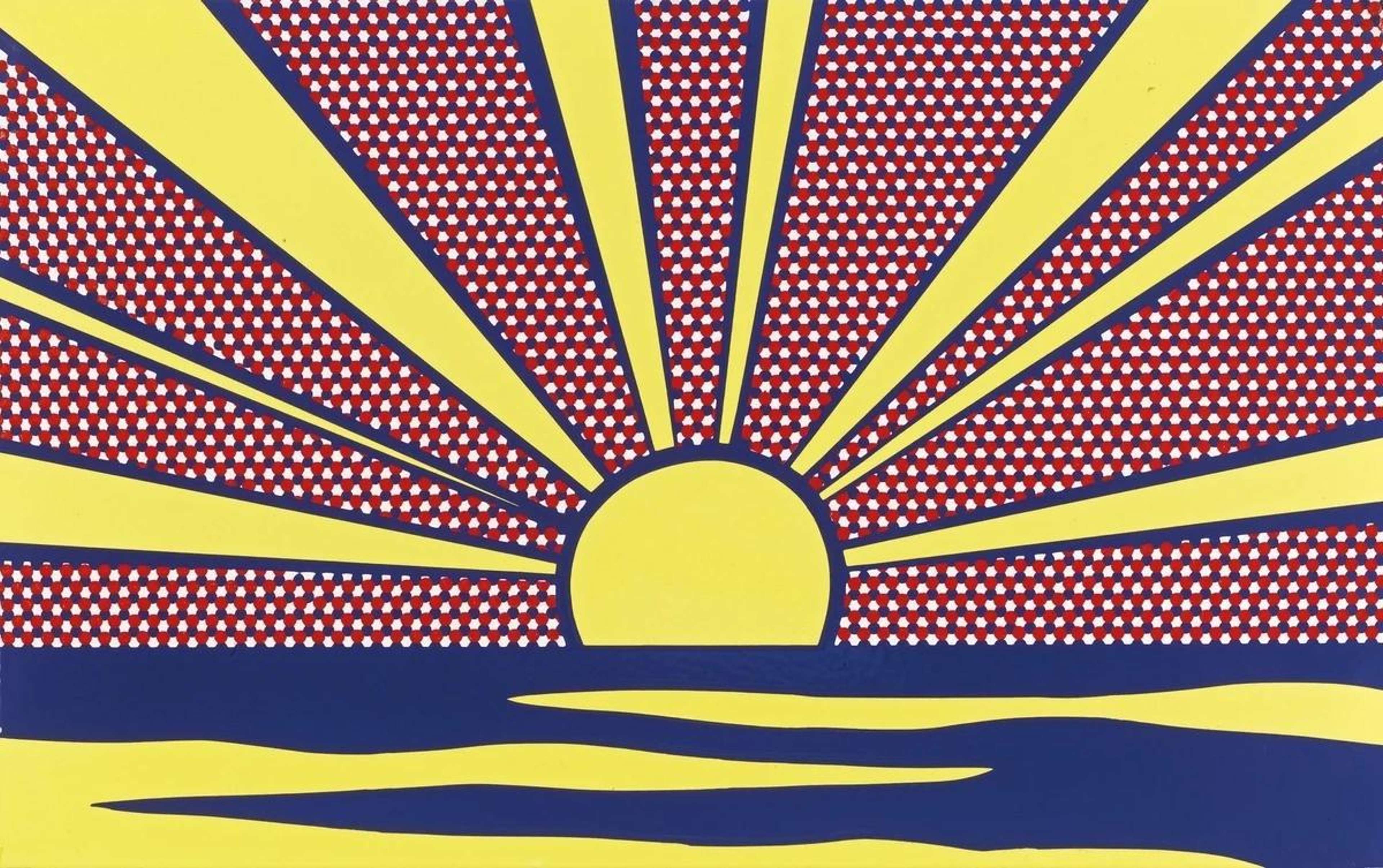
Sunrise

Sunrise
Signed Ceramic
Roy Lichtenstein
Price data unavailable
There aren't enough data points on this work for a comprehensive result. Please speak to a specialist by making an enquiry.
57 x 91cm, Edition of 5, Enamel
Auction Results

Track auction value trend
Meaning & Analysis
Roy Lichtenstein’s Landscapes, Moonscapes and Seascapes are important parts of his early artistic oeuvre. The vast sequence moves away from the comic book imagery that first gained the artist critical recognition. Instead, the series gains inspiration from the history and conventions associated with the landscape genre.
Sunrise was executed in 1965 as an individual landscape edition. It is a rare example of porcelain enamel on perforated steel. The artist presents the omnipresent sun motif in a highly contemporary way, skillfully capturing the dynamic intensity of this natural occurrence. The print employs Lichtenstein’s strong, bold lines, signature dots and accentuated colours. The bright yellow sun emerges from behind the horizon with broad demarcated rays. Its yellow light is reflected on the surface of the blue waves below. Lichtenstein’s two-colour gradation of blue and red dots constitute the skies. This method is essentially a machine-like extension of Pointillism.
The artist in this print considers modes of representation and seeing, ideas he previously explored in his Haystacks and Cathedralseries. Although the work was prepared successively by hand, it was perfected using machines. Lichtenstein’s mechanised process of creation distorts the imagery. Therefore, the composition is as much a sly criticism of consumerism, as it is a pop rendition of a landscape.